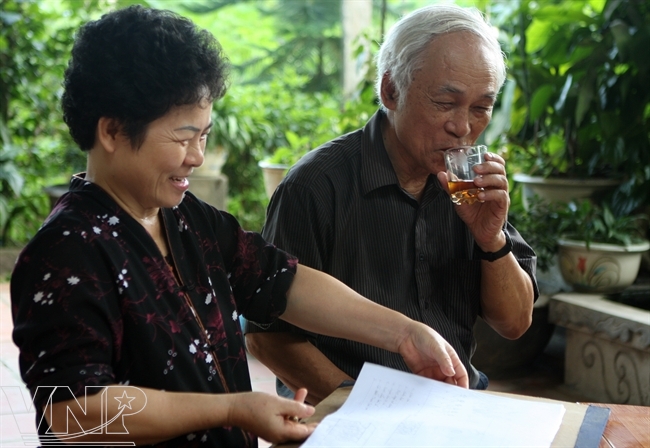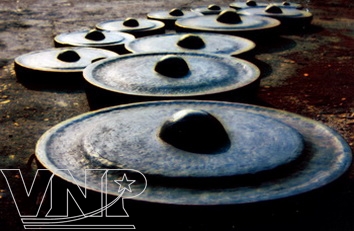According to his research, although the Muong people do not have script they do have hundreds of valuable literary works passed down orally, including the epic “De dat de nuoc”, poems, legends and pieces of wordless music, and a great treasure of diverse musical instruments. Long ago, the Muong people had different dances performed on special occasions like festivals and funerals to serve the ruling circles who even had their own dancing team. After the August Revolution, the ruling class was overturned so the dances got lost.

Meritorious artist Bui Chi Thanh. Photo: File

Research projects on the dancing art of the Muong people conducted by researcher Bui Chi Thanh. Photo: Tran Huan

Researcher Bui Chi Thanh and his wife. Phto: Tran Huan
Bui Chi Thanh was born in 1933 in Gia Vien District, Ninh Binh Province. Although he is not a native of the Tay Bac region, Thanh really felt a strong attachment to the dancing of the ethnic groups in Tay Bac ever since he was a young soldier in the region. In 1959, he studied at the Intermediate Dancing School in Hanoi with a major in choreography. After graduating from school, he returned to the Tay Bac region to lecture, research and organize many courses on dances for the Thai, Dao and Muong people.
He seems to have spent his whole life in Tay Bac and he pays special attention to the traditional dances of the Muong people. When there were opinions that the Muong people did not have dances, he had to travel to different remote areas in Hoa Binh, Thanh Hoa and Nghe An provinces – the home of the Muong people to conduct surveys. During the trips, he researched and took notes in detail that were then used as evidence for him to successfully prove the origin and history of the traditional dances of the Muong. He researched, discovered and restored many dances, namely the dance with fans, the dance with flags and the dance to offer gifts to the dead. He also announced research projects on the art of the Muong, including “Music in the Muong Family” and “The Dance of the Daughter in Law”.

During a trip to research the dancing art of the Muong people. Photo: File

Thanh spends much time teaching the Muong people the art of dance. Photo: File

The gong team of the Muong people in Hoa Binh. Photo: File
|

A set of gongs of the Muong ethnic people. Photo: File
|
| Researcher Bui Chi Thanh was born in 1933 in Gia Vien District, Ninh Binh Province. He won the best director awards for the dances: “Cay Bong Mau” (1993), “Hoa Binh’s Victory” (1992). He also was awarded the National Price for three research projects on the Muong dance, the Labour Medal, 2nd class, and the noble title of Meritorious Artist. |



